Modern newsrooms face growing pressure to balance security with the flexibility needed for fast-paced journalism. Open-source solutions offer a powerful way to build digital newsrooms that protect sensitive information while maintaining the collaborative workflows journalists need. A secure open-source digital newsroom combines robust security measures with transparent, customizable tools that can adapt to any news organization’s specific needs.
The shift toward open-source newsroom software reflects a broader industry trend where transparency and control matter more than ever. News organizations can examine every line of code, customize security protocols, and avoid vendor lock-in while building systems that scale with their operations. This approach gives newsrooms the power to create secure environments without sacrificing the innovation that drives modern journalism.
Building this type of newsroom requires understanding which components provide the strongest security foundation and how to implement them effectively. The right combination of open-source tools can create a digital workspace that protects sources, secures content, and enables seamless collaboration across teams working from anywhere in the world.
Key Components of Building a Secure Open-Source Digital Newsroom
Building a secure open-source digital newsroom requires careful planning around security practices, software selection, and team collaboration. These three pillars work together to create a safe and efficient environment for modern journalism.
Essential Security Practices for Newsrooms
Every newsroom has its own circumstances that present unique security risks that come with different forms of protections and support. Journalists and reporters are in constant contact with sources and sensitive information, so there’ll be plenty of people with negative intentions – aka threat actors – paying extra attention to any security weaknesses.
Code Security and Updates: Open-source projects and software must be updated on a regular basis to stay secure. Preferably, a newsroom will use automatic security updates for its software. At the very least, newsrooms should re-scan their code just in time for their live launch to identify known vulnerabilities.
Access Control: Not every person needs access to every system. A newsroom should use role-based access permissions whenever possible to give reporters and editors only the tools they need to do their jobs. Two-factor authentication can add another layer to that access control.
Protecting Data: Protecting sources is a core part of journalism. Newsrooms should encrypt files and communications that involve sources or sensitive information. They should always have secure, back-up systems that also protect sensitive data in the event of both technical failure and security failure.
Security Awareness: All staff need to know how to identify phishing attacks and other threats. By establishing staff training on a regular basis to keep all staff aware of changes to security threats will make sure their attention is drawn back on the newsroom business.
Choosing the Right Open-Source Newsroom Software
The right software makes or breaks a digital newsroom. Open-source options offer flexibility and cost savings, but they require careful evaluation.
Popular Newsroom Platforms Superdesk stands out as a complete newsroom management system built by journalists for journalists. It handles everything from story creation to distribution. Other options include custom solutions built on GitHub repositories.
Key Features to Look For: Good newsroom software should handle content management, workflow automation, and multi-channel publishing. It should also integrate well with social media platforms and analytics tools.
Community Support Strong communities like OpenNews provide ongoing support and resources. They offer guides for implementing and maintaining open-source projects in newsrooms. SourceFabric also provides professional support for newsroom software.
Technical Requirements: Newsrooms need software that scales with their needs. The platform should handle peak traffic during breaking news events. It should also work well with existing tools and systems.
Collaborative Workflows for Journalists and Developers
Modern newsrooms work best when journalists and developers collaborate closely. This partnership creates better tools and more efficient workflows.
Breaking Down Silos The old model of separate tech and editorial departments does not work well anymore. Journalists and developers should sit together and work on shared projects. This helps them understand each other’s needs better.
Shared Project Management Teams should use tools like GitHub for tracking both code changes and editorial workflows. This creates transparency and helps everyone stay on the same page.
Regular Communication: Daily standups and weekly planning meetings keep everyone aligned. Developers learn about upcoming stories that might need special tools. Journalists learn about new features they can use.
Training and Skill Sharing: Journalists benefit from learning basic coding concepts. Developers benefit from understanding news cycles and editorial processes. Cross-training makes the whole team more effective.
Best Open-Source Solutions and Implementation Strategies
Successful newsroom security starts with selecting the right content management system and building strong community partnerships. The most effective deployments combine proven platforms with active development communities and clear security protocols.
Comparing Leading Open-Source Content Management Systems
Superdesk stands out as the most comprehensive solution for newsrooms. This platform offers real-time collaboration, content planning, and built-in security features designed for journalism workflows.
Superdesk includes automated backup systems and user permission controls. The system supports multiple newsroom roles from reporters to editors. It also provides API access for custom integrations.
Sourcefabric develops several newsroom-focused tools beyond Superdesk. Their Newscoop platform serves smaller newsrooms with basic content management needs. Airtime handles podcast and radio content distribution.
WordPress remains popular for smaller news sites. However, it requires extensive security plugins and regular updates. The platform needs careful configuration to meet newsroom security standards.
Ghost offers a simpler alternative for publication-focused newsrooms. It provides fast loading times and clean interfaces. The platform includes basic user management and content scheduling features.
| Platform | Best For | Key Security Features |
|---|---|---|
| Superdesk | Large newsrooms | Role-based access, audit trails |
| WordPress | Small to medium sites | Plugin ecosystem, regular updates |
| Ghost | Publication-focused | Built-in SSL, simple user management |
Effective Project Management and Community Involvement
GitHub serves as the central hub for most open-source newsroom projects. News organizations should maintain active repositories for their customizations and contribute back to main projects.
The Field Guide to Open Source in the Newsroom provides essential guidance for newsroom technology decisions. This resource helps editors understand technical requirements and security considerations.
OpenNews connects newsroom developers with the broader journalism technology community. They organize conferences and provide funding for open-source journalism projects.
Regular code reviews prevent security issues before they reach production. Teams should establish clear protocols for testing updates and patches. Documentation helps new team members understand security procedures.
Community involvement reduces long-term maintenance costs. Active participation in project forums provides early warning about security issues. Contributing bug reports and patches strengthens the entire ecosystem.
Real-World Examples of Secure Digital Newsroom Deployments
The Guardian built their content management system on open-source foundations. They use custom security layers and regular penetration testing. Their system handles millions of readers while maintaining strict security standards.
ProPublica relies heavily on open-source tools for investigative reporting. They developed secure document handling systems using existing open-source projects. Their approach emphasizes data protection and source anonymity.
NPR created a modular system combining multiple open-source projects. They use separate systems for content creation, publication, and audience engagement. This approach limits security risks by isolating different functions.
Local newsrooms often start with WordPress or Ghost implementations. The Texas Tribune began with WordPress and gradually added security plugins. They now use custom authentication systems and regular security audits.
Voice of San Diego demonstrates how smaller newsrooms can implement enterprise-level security. They use cloud-based hosting with automated backups and monitoring. Their approach proves that budget constraints don’t prevent secure deployments.



